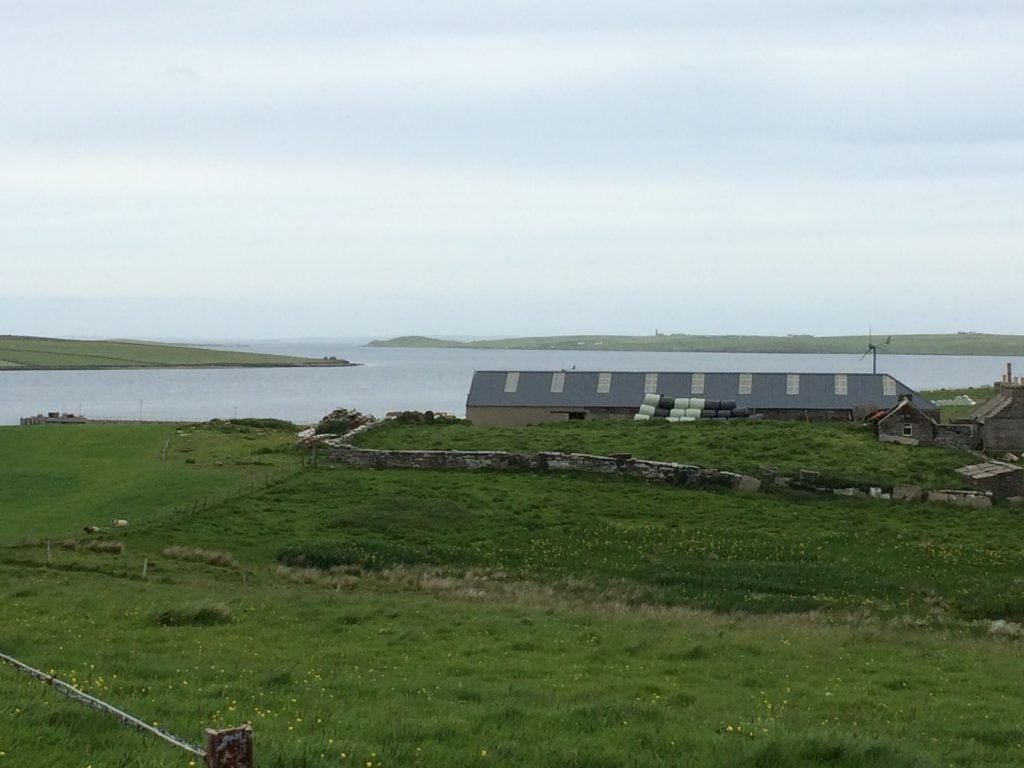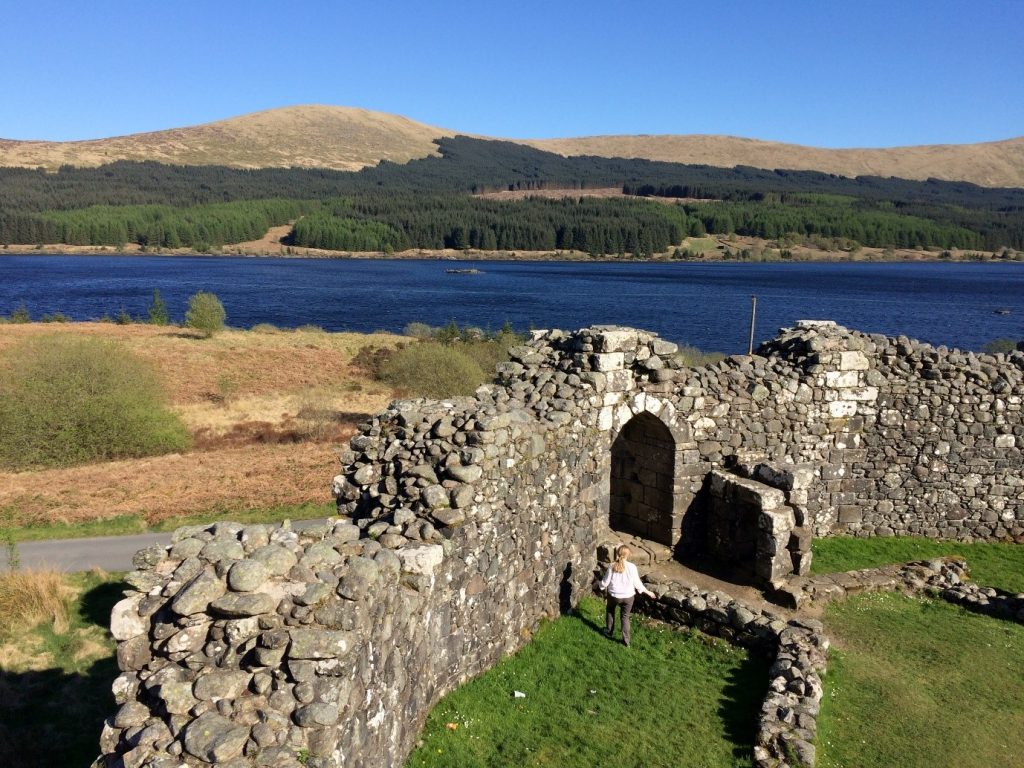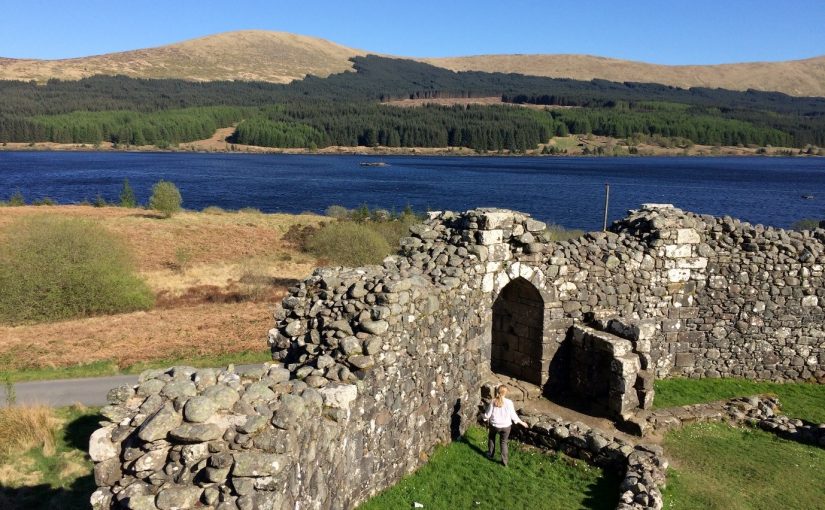Research on castles has outgrown the walls of architecture, sprung from the rubbly tangle of archaeology and taken flight from the pages of law texts, charters and literary exposition. In the hands of an adept writer, these are small bumps on the road to timely completion. Presently, however, I find myself in the camp of the almost-complete thesis writers (PhD fourth-yearers: here is fellowship!). It is a credit to castle studies that there is so much to think and write about and, perhaps, get lost in. This post shares some of the most interesting conclusions from my work looking at early stone castles in two polities in medieval Scotland, the Earldom of Orkney and the Lordship of Galloway. Among the themes I examined was the transition from timber to stone architecture, the relationship of castle to landscape and the political context for castle construction in these areas.
Why Orkney and Galloway? To begin with, we cannot be certain why castles appeared in non-‘feudal’ Orkney in the first place. Secondly, one of Orkney’s early castle sites, according to accepted wisdom, is the prototype for a larger group of early castle sites in the earldom – and has influenced larger debates on castles in Scotland more generally. Cubbie Roo’s Castle, this foremost plank of Orcadian castellar wisdom is, I believe, a little younger than widely believed. Nevertheless, the evidence suggests Orkney was probably home to a stone castle founded around the middle of the 12th century, decidedly early for this part of the world.

If the castle site (but not the surviving architecture) is genuine, then the attendant landscape must be examined too, for Cubbie Roo’s and other Orcadian castles. Following a conventional model of castle as the centre of lordship, one would expect to find churches and important farm sites close to suspected or documented castle sites. This was simply not the case in Orkney. Cubbie Roo’s and the other castle sites I examined were, on present (chiefly place-name) evidence, sited on marginal lands of indifferent quality. Some preserved evidence of associated chapel sites, which fits with the conventional model of early castellar lordship.
The disconnect between terrestrial wealth and castle location opened three possibilities about the origin and siting of castles: firstly, were these defensive sites? If defence included a consistent grasp of the surrounding area, including major seaways through the Earldom, then the answer is no. Secondly, were these sites connected to maritime wealth? It is entirely plausible: recent research has demonstrated the wealth of the earldom derived massive fisheries exploitation. Thirdly, were these sites connected to ‘new’ arrivals to the Earldom? The political upheavals in the Kingdom of Norway (to which Orkney belonged) saw magnates appear in the Earldom with no obvious familial connection. The lack of obvious relationship with good farming land may be taken to suggest the castles were built on land acquired more for the purposes of castle building (and architectural showmanship) and maritime exploitation than the inherent wealth of the soil. The new men’s power derived from proximity to the Earl, not a direct ancestral claim to a portion of Orkney’s economic output. Orkney’s earliest castles, whatever their form, were the product and reflection of a shift in how comital wealth and power operated.

Galloway’s castles present a different challenge; though as a group they are more numerous than their Orcadian counterparts, the evidence for them is drastically more erratic. The exquisite (and displaced) Loch Doon Castle is more clearly understood than the hummocky mound of Castledykes outside Kirkcudbright, for example. On a cursory examination of both sites’ landscapes shows that Castledykes is much easier to understand. Kirkcudbright was the centre of the powerful Lordship of Galloway. Its hinterlands feature no fewer than three monastic foundations by the Lords, and the probable extent of demesne estate concentration in the area around Kirkcudbright is one of the highest in the Lordship.
What of Loch Doon Castle? Any modern visitor will appreciate the eponymous loch is remote and difficult to access from the big towns of Scotland’s south-west. However, it was originally built on an island in the Loch and later dismantled and reconstructed on the shore. It initially sat on a substantial route-way between the Glenken in Galloway – another demesne area of the Lords – and the Scottish coastal royal burgh and castle of Ayr. Another route south of Loch Doon offered access to the southern area of Carrick and, via the River Cree, the Wigtownshire portion of the Lordship of Galloway, with its probable administrative centre at Cruggleton Castle. Though its landscape is presently dominated by fishing holiday cottages and forestry, place-name evidence suggests in the medieval period the area was exploited for its pastoral suitability, and analogous documentary evidence from monastic sources hint at mineral wealth too. Doubtless Loch Doon Castle also formed an upland centre in Carrick in counterpart to the lowland, maritime-oriented centre at Turnberry Castle (also surveyed during this project).

Lastly, an overview for all of Scotland. A small, prefacing section of my thesis examined the monuments record for all possible castle sites in Scotland, including the sites above and less conventional secular power centres in the 12th-14th centuries – palaces, enclosures, crannogs (artificial islands in lochs), duns and brochs. A growing body of evidence in Scotland suggests many sites typically understood as prehistoric (chiefly the last three aforementioned categories of sites) were re-occupied during the broad medieval period. One conclusion from this country-level study suggested that there were more medieval power centres (e.g. bearing evidence for occupation) per square kilometre in the western counties of Scotland than the east. This likely reflects the underlying patterns of early medieval lordship in Scotland over which the culture of castles was overlain. This may act as another, belated, nail in the coffin of the military-architecture thesis of castle studies in Scotland.
The framework of understanding castles through landscape as much as architecture and archaeology is one I hope to apply more widely to Scotland and, as I engage more fully with English castle studies in my new job, in the wider medieval world.
